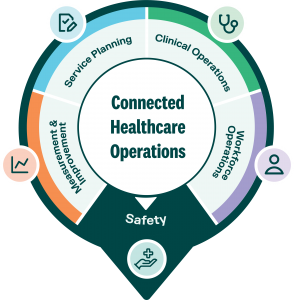Enhancing Patient Safety Through Connected Healthcare: A Collaborative Study by RLDatix and BMJ
 At RLDatix, our mission is to empower health and care organisations, with the tools and insights needed to improve patient safety and quality of care. Understanding the complexities of patient safety incidents and leveraging data effectively are crucial steps in achieving this goal. In collaboration with BMJ, we are excited to introduce the report, “Data and Decision-Making Regarding Patient Safety Incidents: A Survey of Leaders in Healthcare Organisations.”
At RLDatix, our mission is to empower health and care organisations, with the tools and insights needed to improve patient safety and quality of care. Understanding the complexities of patient safety incidents and leveraging data effectively are crucial steps in achieving this goal. In collaboration with BMJ, we are excited to introduce the report, “Data and Decision-Making Regarding Patient Safety Incidents: A Survey of Leaders in Healthcare Organisations.”
The Power of Connected Healthcare Operations
Our collaborative study with BMJ aimed to assess the availability of data on patient safety incidents and explore the benefits of combining this data with other relevant datasets. By integrating diverse data sources, NHS leaders can gain deeper insights into the root causes of patient safety incidents and develop more targeted interventions. The study engaged 176 senior healthcare leaders from 22 countries, including CEOs, Chief Medical Officers, and other executives, to gather their perspectives on data utilisation and patient safety.
Key Findings: Workforce and Organisational Factors
One of the critical findings from the survey is that workforce and organisational factors are the primary root causes of patient safety incidents. Issues such as staff capability, capacity, and organisational culture significantly impact patient safety outcomes. Recognising these factors allows NHS organisations to address the underlying causes of incidents more effectively and implement strategies that promote safer health and care environments.
The Role of Data in Improving Patient Safety
Respondents demonstrated a strong commitment to using data in their decision-making processes. Over 90% of participants found integrating various datasets extremely or very useful. Regular review of patient safety data in executive meetings highlights the critical role data plays in shaping healthcare policies and practices. By bringing together data on patient safety, workforce performance, and patient experiences, healthcare leaders can develop a comprehensive understanding of the factors influencing patient safety and identify areas for improvement.
Connecting Data for Better Insights
The study highlights the importance of connecting different types of data within healthcare operations. By creating an interconnected data environment, NHS leaders can uncover patterns and trends that might otherwise remain hidden. This connected approach facilitates a more holistic view of patient safety, enabling leaders to make informed decisions that enhance care quality and safety.
Fostering a Blame-Free and Psychologically Safe Culture
The study also emphasises the importance of fostering a blame-free and psychologically safe culture within healthcare organisations. Encouraging open communication and learning from incidents without fear of blame are essential for continuous improvement. By creating an environment where staff feel safe to report incidents and share insights, NHS organisations can enhance their ability to learn from past experiences and prevent future occurrences.
Conclusion
At RLDatix, we are committed to driving improvements in patient safety through data-driven insights and collaborative efforts. Our partnership with BMJ on this report is a testament to our dedication to understanding and addressing the complexities of patient safety incidents.

